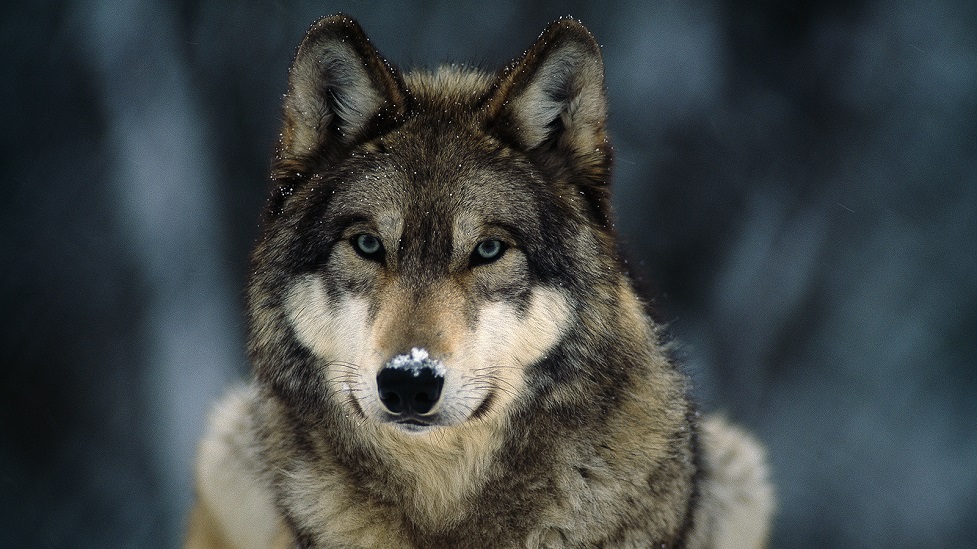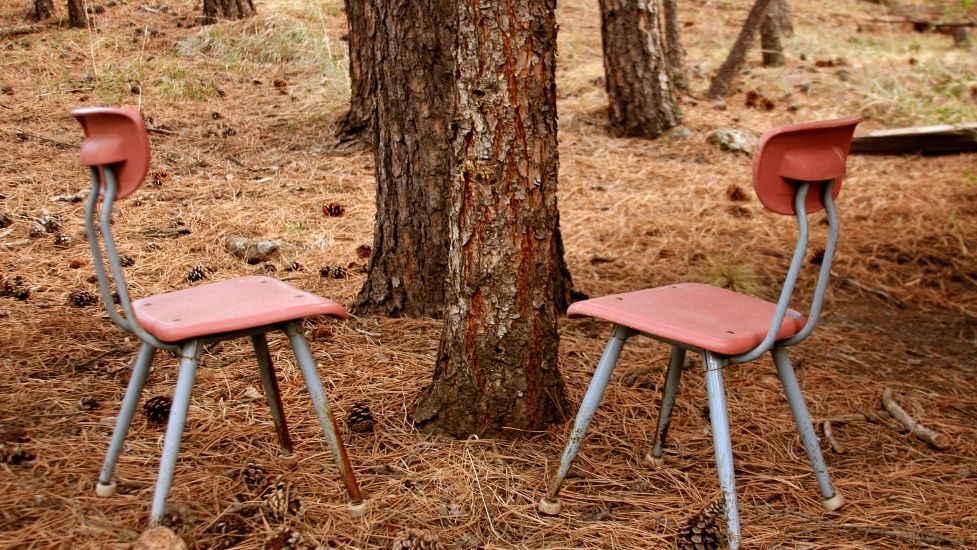Uncover the mysteries that Alberta's ecosystems have to offer
PURPOSE
In this activity, students learn about the enigmas that occur when we try to manage something as complex as an ecosystem. In small groups, students learn about ecosystem enigmas that arise from human interventions. This activity describes the relationships between predator and prey species and their influence on population changes. It concludes with a real-life enigma: Why Trees Need Salmon and Bears.
GRADE LEVELS
10-12
TIME NEEDED
20 minutes

Curriculum LINKS
Science 14, Unit D, Outcomes 1, 2
Science 20, Unit D, Outcomes 2, 3
Biology 20, Unit B, Outcomes 1, 2
Biology 30, Unit D, Outcome 3
MATERIALS NEEDED
Download: Ecosystem Enigmas images (pdf)
Instructions
1: Ask students: Why do aspen trees need wolves?
It turns out that aspens need wolves to help keep populations of ungulates like elk in check – an elk’s favourite food is the young shoots that aspen send up as they try to reproduce. Some areas around Banff townsite, for example, are so overrun by elk (because wolves rarely come close to the townsite) that there are no young aspen trees, and the ecosystem is changing as a result.
2: Tell students that this is an example of an ecosystem enigma. An enigma is a strange or odd observation, one that seems different from expected. Challenge students to “put on their ecologist hats” as they try to answer the following ecosystem enigmas…
Why do beavers need to be in the area in order for Yellowthroat warblers to flourish?
Beavers create swamps and ponds surrounded by low-lying shrubs – the favourite habitat of the Yellowthroat warbler.
Why are pollutants found in high alpine lakes that have never even been visited by humans?
The answer has to do with the “leapfrog effect.” Scientists are finding that chemicals (such as toxaphene, spread to control cotton pests in the U.S.) used in lower latitudes move northwards in air currents and only come to earth again where they are trapped by precipitation, such as the copious snow that falls in the Canadian Rockies.
Why do fences built to keep elk off the Trans-Canada Highway inside Banff National Park attract coyotes onto the road, where they are sometimes killed?
The fences work. Elk stay out of the highway area, allowing the grass inside the fence and beside the highway to grow tall. These grasses provide excellent cover for mice – and mice attract coyotes, who can squeeze through holes in the fence to get to the food. Unfortunately, they may stray too close to the highway and are killed by vehicles.
Why do these same fences sometimes mean death for Bighorn Sheep?
A coyote herd in the area of Lake Minnewanka learned how to use the fence to trap Bighorn Sheep against it, eventually causing the extinction of a whole herd of sheep.
Why does the presence of numerous elk in the Bow Valley threaten the very existence of the moose population – even though there’s enough food for both species?
For decades, elk have been carriers of a nasty parasite called a liver fluke, a large slug-like parasite that tunnels into the liver of ungulates. Elk have grown used to this parasite, and it doesn’t seem to affect them. But if a moose is infested with more than a couple of liver flukes, it may die. Increasing numbers of elk in the Bow Valley increases the chance that moose populations are infested with liver flukes.
Why does a beautiful ornamental plant, purple loosestrife, decrease duck populations in an area?
Purple loosestrife is a popular plant used in gardening. Unfortunately, this non-native/introduced species is very productive: each plant can disperse 2 million seeds per year. Once these seeds enter a waterway, the plant continues to grow and overtake wetlands, choking out native vegetation. Native herbivores eat around the plants, essentially eating themselves out of food. When purple loosestrife, a plant introduced to North America in the late 1800s, overtakes an area, wildlife populations, including ducks, suffer.
3: Ask the students: Why do the numbers of songbirds decrease when an ecosystem loses its large, tertiary consumers/predators?
These images can be used to answer this interesting question. The lesson for each image is described below:
Image #1
Start by asking students: If the population of wolves goes down in an ecosystem, how would it affect the population of song sparrows?
Accept all answers – but tell students that in this activity the habitat itself is assumed not to change, and that there is no direct predator/prey relationship – wolves don’t eat sparrows.
Image #2
It turns out that when wolf numbers decrease, so do sparrow populations.
Can you think of some kind of interaction or interrelationship that can be used to explain this?
Accept some guesses and theories from students, asking them to back up their answers and suggest how they would prove or disprove their theories if they were biologists.
Images #3 and #4
Tell students that animals such as raccoons are called mesopredators – they do not sit at the top of the food chain, but they definitely prey on the eggs and young found in any sparrow nest they might find on the ground (i.e. they are secondary consumers).
Image #5
This image shows the whole picture.
Discussion
Ask students: How does the wolf populations impact sparrow populations?
Wolves in an area might keep raccoon populations in check. Therefore, the sparrow populations are able to survive. If the wolf population increases, less raccoons will allow the sparrow population to increase as well. If the wolf population decreases (due to hunting, for example), raccoons will thrive and prey on sparrow eggs and young.
Can you think of any other mesopredators that make life difficult for primary consumers?
Several exist around our urban centres. Skunks, raccoons, and coyotes are all examples of mesopredators that can become a problem in urban and rural areas where the tertiary predators (wolves, grizzlies, cougars) that once preyed on them are no longer part of the ecosystem.
Further Extension
For a more scientific example of how ecosystem enigmas work, have your students read and answer the three discussion questions from the following article, Why Trees Need Salmon and Bears.
How would salmon populations be affected if grizzly bears were extirpated from this ecosystem?
Initially, salmon populations may increase if they lost a main predator. Over the long-run, though, salmon populations might be in jeopardy if grizzly bears become extirpated: there will be fewer nutrients entering the forest, which may cause the health of the forest to decline. The riverbank may become less stable and erode, contributing to a loss in water quality and oxygen content in the stream ultimately reducing salmon survival.
What would happen to riparian (riverside) forests if salmon populations plummeted?
The state of British Columbia’s salmon stocks often make the news. Native marine salmon may be adversely affected by salmon-farming (aquaculture). Overharvesting also threatens populations. If salmon populations dropped, grizzly bears would not be able to transfer important nutrients into the riparian forests. Forest and overall ecosystem health might deteriorate.
How could information about these types of ecosystem interactions affect land management?
Knowing that ecosystem components are intrinsically linked should affect the way we manage ecosystems. Traditionally, land management has focused on a single species rather than viewing an ecosystem as a function of several interrelated factors. Decisions concerning land management should be ecosystem-based, or should focus on several species as opposed to a single species. More funds might be needed for managing lands in this manner.
Dr. Reimchen’s discoveries, though thorough, may lead us to ask: “What else don’t we know or understand?” It is part of the nature of science that there will always be outstanding questions. Yet development continues in spite of biologists’ unanswered questions. The reaction of biologists and of many in the environmental community has been to call for decision-makers to use the “precautionary principle.”
Concerned citizens and professionals say: “In the face of so many uncertainties please be conservative in your decision-making and take precautions to avoid unnecessary environmental damage.”
More Bring Nature Home for Teachers
Bring Nature Home is our online database of tried-and-tested CPAWS Southern Alberta activities! Here are some ways that you can bring nature home (or to the classroom) today!

Sound Mapping

Lessons From Trees

